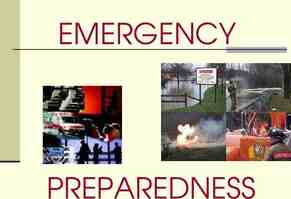Climate Change & Urban Planning Indian Institute for Human Settlements
24 Slides8.07 MB

Climate Change & Urban Planning Indian Institute for Human Settlements

nature of the “challenge” We are confronted with a diverse set of ecosystems, a range of risks, climatic and non-climatic exposures, differential vulnerability profiles and various institutional regimes. We are also witnessing major livelihood transitions that are taking place in these diverse ecosystems, which are expected to intensify and prospectively are expected to take place around the dynamic rural-urban continuum, coupled with future incremental urbanization. This emerging dynamics, across the rural-urban continuum, will create pockets that are representative of a massive concentration of historical and emergent risks, which are expected to be compounded with climatic variability. Additionally, a significant population still lives in extreme poverty and are highly vulnerable to both everyday risk, risks from extreme events and risks from dynamic environmental changes. Simultaneously, there exists serious institutional and governance challenges, compounded by contested growth dynamics, rural-urban migration and contested domains and fluxes on the binaries of informality and formality.

key starting questions then become How do people live their lives in specific places? How are people-centric systems interacting with political, environmental and cultural issues? What roles do carbon and climate play in complex social-economic systems? What are the resource needs and how well are those needs being met? Why and how decisions are made that have resource-centric consequences?

critical next-generation questions should be human-centred Why and how do people change how they live and Why and how do people arrange their lives where they live? What is the climate dimension?

interesting turn in the discourse of climate risk planning in urban areas City governments face new obligations to address climatic risks. Most claim that they lack funding, resources, knowledge and capacities to do so, which may be correct in the context of developing countries. All four aspects of risk-response framework: climate mitigation, adaptation, poverty reduction and disaster risk reduction, seek to reduce risk. Although they may highlight different risks, the challenge is in identifying overlaps and maintaining continuity between short-term and long-term time frames. All four aspects include as a priority - attention to vulnerable populations and measures that can be identified to reduce or remove the risks they face. What is more difficult is to know how to assess and rank priorities. But it is recognizable that priorities need to be influenced by the needs and demands of those who are most at risk & they need to be supported by good local information (including climate information).

multi-level urban climate change risk management framework Link urban renewal and development with short- and medium-term hazard risk reduction and, further, to climate adaptation. Re-examine city development plans that attempt to link a long-term vision for urban development with an action plan for infrastructure upgrading, poverty reduction and better governance. Development of public entitlements and service delivery to the poor and vulnerable to ensure that existing asymmetries and structural vulnerabilities are addressed. Appropriate Urban platform to enable multi-stakeholder engagement with strategic risk sharing and adaptation to create appropriate fiscal and financial incentives for adaptation linked to neighborhood-led processes, especially in informal settlements. Politically mandated city adaptation program of actions linked to private sector and community-led adaptation. Strengthening regional rural–urban linkages-the risks to which cities and their countryside are exposed need to be addressed together, by integrating climate change-related adaptation into regional and Urban sectoral and investment planning Relocation and rehabilitation- Relocation should emerge as a policy option only after all other options have failed.

Characterizing Urban Risk Cities agglomerate people and economic output in small geographic areas. Growing poverty and vulnerabilities in cities. Higher built and other physical and financial assets in urban areas per household than in rural areas. Growing extensive risks in cities. Urban areas also engines of greater pollution and heat island effects. Changing demography: High Distress migration from rural to urban.

Where is Risk concentrated in India? Concentration of Exposure Concentration of People, Systems and Economy Population Density Concentration of Hazards Intensity and Frequency of Key Hazards Droughts, Floods (Pluvial and Fluvial), Cyclones, Landslides (due to precipitation or earthquake), Tsunamis, Earthquakes. Concentration of Vulnerability Quality of Built, Economic and Social Environment Provision of Capacities Quality of Planning and Institutional Systems

Composite Risk 100 Cities with highest composite risk HxVxE C Most of these are in the more populated states of UP, Bihar& West Bengal, poorer states of Madhya Pradesh and Orissa other than those in the IndoGangetic plains, Himalayan range or coastal India

An example Urban relocation risk

Benefits Costs Low High BEST OUTCOME Medium High Medium Low WORST OUTCOME

Benefits Costs Low High BEST OUTCOME Medium High Medium Low WORST OUTCOME

social science led framing of the climate challenge Focus on human welfare and human change. Examine issues of adaptation, and sustainable development in the context of the ‘most’ vulnerable. People as the “main event,” with climate and carbon as important dimensions in configured well-being.

Thank You
















